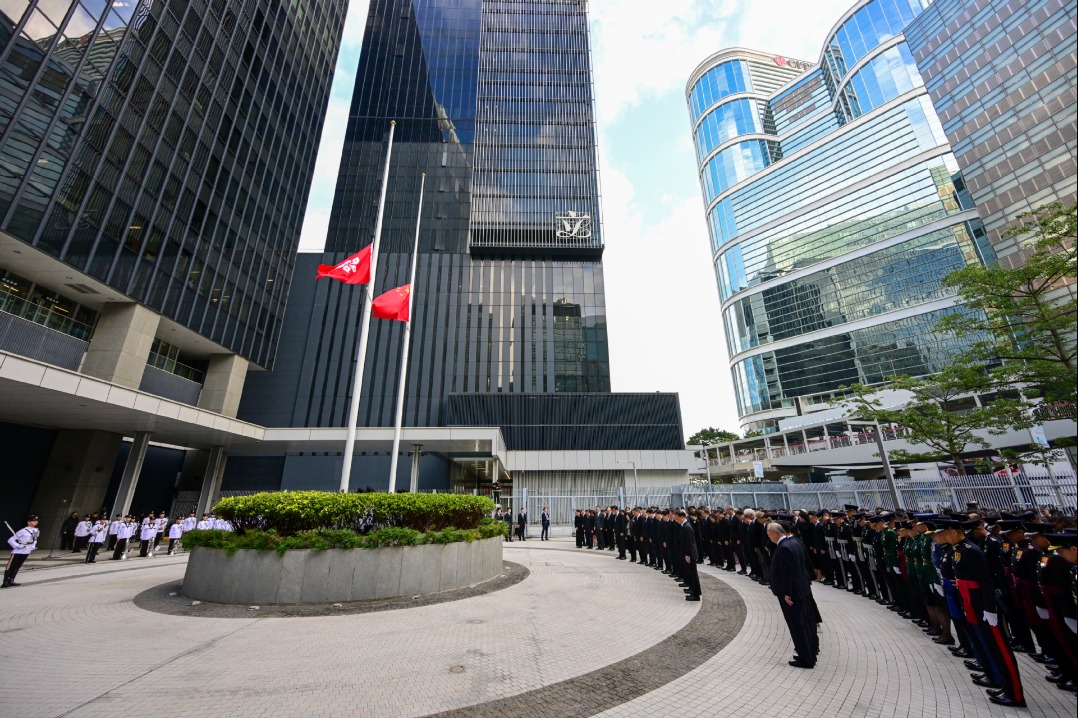Exhibition expounds on 'vision and verse' in Chinese art
Importance of poetry in painting displayed in 90 artworks at The Met in New York


For more than a millennium, legend had been growing around poems and paintings Wang Wei had created depicting his country estate in modern-day Lantian county, Shaanxi province. While the poems have survived, the paintings — like all other ones traceable to Wang Wei — today exist only in copies including rubbings by later artists.
Drenched in the master's signature bucolic idealism, the poems have collectively spawned, throughout history, the biggest number of painterly reinterpretations, one of which Dolberg has included in the current exhibition.
In another work on view, the 14th-century painter Tang Di wrote in his inscription that his painting was inspired by a Wang Wei poem, but stopped short of specifying which one. "Tang was likely to have played a game with his knowing audience," said the curator, who himself willingly took up the challenge.
"'I walk to the place where the water ends; and sit and watch the time when clouds rise'. Those are the lines from Wang Wei that I believe Tang had in mind," said Dolberg, who described the painting as having been executed in the "strength and grandeur of the northern school (of Chinese painting)" while capturing the "light meditative mood" of Wang Wei, the reputed founder of the southern school.
Utmost respect
Then there's the friendship between Wang Wei and Meng Haoran.
"Stay inebriated with rustic wine, read ancient books in mirth," was the poetic advice from Wang to a disillusioned Meng who, having failed to find fame and a position in the Tang Dynasty capital, was heading back home for a sequestered life.
Judging by all evidence, Wang had always treated his friend with the utmost respect. "As graceful as Meng Haoran was in a Wang Wei painting", was how a renowned Song-dynasty calligrapher described a painting by early-Song artist Li Cheng (919-967) that shows a scholar and his boy attendant traveling in a wintry forest.
The one on view at the Met Museum, once attributed to Li Cheng, is believed to be a 12th-century copy of the original painting.
Mining the legacy of the Tang Dynasty, the greatest era of Chinese poetry, the Song painters produced misty landscapes that "matched the dreamy quality of the poems", to quote Dolberg. In other cases, even paintings that were not explicitly based on poems could sometimes evoke famous verses in the minds of their viewers.
"It was really during the Song Dynasty that Wang Wei's idea of painting and poetry sharing the same source had started to blossom," said Dolberg, who believes that the delay was due to a strong tendency among the educated elite to view poetry writing as a much nobler pursuit than painting.
One man who certainly did not think that way was Su Shi (1037-1101), the Song-dynasty polymath who was equally celebrated for his poetry and prose, painting and calligraphy.
"A picture resides is every piece of (his) poetry and vice versa" is Su's accolade for Wang Wei, an idea he "not only upheld but also revolutionized", to quote Dolberg.
"He did that by going back to how simple and beautiful the idea is. Through poetry, you can express what's in your heart; through painting, you can do it too," said the curator.
Two of the master's paintings arguably exist today, and both depict simple subjects as a grotesquely-shaped stone and tree. "They are more evocative than descriptive — a poem instead of a long essay," said Dolberg.
























